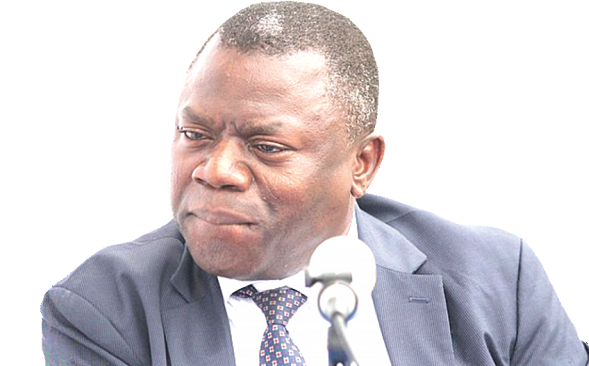
No bonuses for banks staff as mounting debts trigger write-offs
Staff of universal banks will be denied their bonuses this year as rising Non- performing loans in the sector crossed GH¢6.1 billion for the seven months of the year.
Several bank staff who spoke to the Graphic Business on condition of anonymity feared that they would be denied their end year bonuses to allow their banks to adjust for the rising bad loans in the sector.
Last year, several banks did not pay bonuses to their employees due to similar concerns of several loans in the sector which had gone bad and it is feared that the mounting levels of non-performing loans and the provision for bad debts would deny them bonuses to adjust for the debts.
The banking sector had made provision of GH¢631.8 million as bad debts in their books at the end of July 2016, the latest Financial Stability Report indicate
Stressed loans in the banking sector crossed GH¢6.1 billion for the first seven months of the year, showing an increase of nearly 70 per cent.
The Bank of Ghana (BoG) Financial Stability report covering operations of banks up to July, this year show that Non Performing Loans (NPLs) went up by almost 70 per cent from GHc 3.6 billion in 2015 to GH¢6.1 billion.
Loan portfolio
This is evident of the fact that the banking sector sustained the less aggressive growth strategy for loan portfolio in the third quarter of the year as the challenging operating environment for businesses continue to undermine loan repayment capacity.
The banks, by the end of the first quarter of 2016 wrote off GH¢231million. This means that as much as GH¢400million was written off as bad debt between April and July 2016.
The BoG attributes the worsening NPL ratio to the general slowdown in the economy, increasing cost of production due to high utility tariffs and loan reclassification by some banks.
The surge in stressed loans will mean banks need even more cash to shore up their balance sheets - funds that will have to come from other sources as their ability to raise money through stocks or bond sales is constrained by low profits and sometimes poor valuations.
An analysis of the NPLs showed that the private sector accounted for a larger chunk of the debts, instead of government, as it has often been blamed for the rising bad debts of most of the commercial banks.
Private sector credit
Credit to private sector contributed 85.8 per cent of the total banking sector’s NPLs as at July 2016, while the public sector accounted for 14.2 per cent. The level of NPLs associated with the private enterprises was driven mainly by indigenous enterprises.
The upward adjustment in the average lending rate despite the relative stability in the policy rate and the interbank interest rate at 26 per cent and 25.5 per cent reflects the banks’ perception of weakening repayment capacity amidst high cost of funds.
As a result, the year-on-year growth in credit to the private sector (in real terms) declined consistently during the first three quarters of 2016 with sustained contractions since March this year.
The average NPLs ratio for the banking sector remained elevated above 19 per cent as at July this year, reflecting persistent weakness in loan portfolio quality and underscoring the reduced risk appetite of commercial banks.
But a bank of Ghana release states that, “The outlook for the industry is positive with the restructured VRA debt and commencement of payments”.
It adds that the “Restructuring arrangements have been initiated for debts owed by Bulk Oil Distribution Companies (BDCs) to the banks”.
State owned enterprises
The report also notes that the “Government’s efforts to wean state owned enterprises (SOEs) off its balance sheet as well as the on-going fiscal consolidation is likely to minimize Government’s indebtedness to banks”.
“All these arrangements are expected to reduce the size of banks’ impaired loans, improve the industry’s solvency as well as liquidity, and in turn boost performance of the banking industry. These efforts, together with improved loan recovery efforts and improvement in the macro economy, will boost credit delivery to facilitate economic growth”, the report stresses.
This means that the total outstanding debts (foreign and local currency units) due from the Volta River Authority is equivalent to GHȼ2.2 billion which will be amortized over a 3-5 year period.
Adjusting the NPLs ratio for the restructured amount could potentially improve the loan portfolio at risk to 12 per cent by the close of the year down from the 19.1 per cent as of July.
Improving the NPL ratio at this time is not expected to result in an immediate drive for loan book expansion as the restructured debts do not immediately inject significant capital for banking operations.
December elections
Analysts say, the upcoming elections in December is a potential source of uncertainty which would sustain the cautious investment strategies employed for the rest of the year.
It is expected that lending would be subdued for the rest of the year as commercial banks maintain their risk-averse posturing amidst the fragile macroeconomic stability in 2016.
Despite this rising NPLs, BoG is confident of a sound banking sector, pointing to the annual growth in total assets of the industry, which picked up in July 2016 compared to the previous year and was largely accounted for by the significant increase in banks’ investments in bills and securities as well as the sharp increase in foreign assets, according to the BoG report.